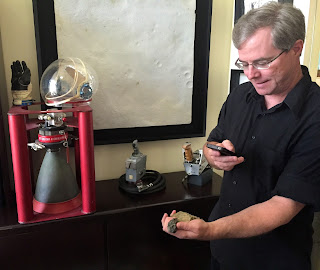by guest reviewer Dan Stormont
As his memory fails him, Mr. Holmes struggles to write a book correcting the misconceptions that Dr. Watson created in his popular novels. Then there is the dichotomy between the fictional Sherlock who solves every case and the real Mr. Holmes who goes into seclusion after failing to correctly analyze the clues in what would be his last case. The real reason he is writing the book is to find the truth in a case that still haunts him and come to grips with it.
Another key dichotomy is between the aging and increasingly senile Mr. Holmes (Ian McKellen) and Roger (played charmingly by Milo Parker), the young son of his housekeeper, Mrs. Munro (Laura Linney) who befriends the solitary Mr. Holmes. At first the boy is intrigued by the reputation of the famous Mr. Holmes, but over time he gets to know the real man. At the same time, Holmes, who has spent his life remaining detached from others, grows fond of Roger and becomes a role model for this boy who has no father in his life. In yet another dichotomy, Holmes’ seclusion in an isolated English country manor provides a contrast to his highly public former life on Baker Street in the heart of bustling London. Finally, there is a dichotomy when Mr. Holmes, who spent his whole life trying to ferret out the truth, lies to a friend in Japan to save him unnecessary heartbreak.
There is, of course, much more to this engaging and heart-warming movie than the many dichotomies. There is a real mystery to be solved; there are a number of humorous moments as Mr. Holmes tries to explain that he really is Sherlock Holmes, even though he doesn’t wear a deerstalker hat or smoke a pipe (he prefers a cigar); and it is painful to watch him struggle with the onset of Alzheimers. But, in thinking back on the movie, it was the striking contrasts that stayed with me. “Mr. Holmes” is about discovering truths through dichotomies.
There is, of course, much more to this engaging and heart-warming movie than the many dichotomies. There is a real mystery to be solved; there are a number of humorous moments as Mr. Holmes tries to explain that he really is Sherlock Holmes, even though he doesn’t wear a deerstalker hat or smoke a pipe (he prefers a cigar); and it is painful to watch him struggle with the onset of Alzheimers. But, in thinking back on the movie, it was the striking contrasts that stayed with me. “Mr. Holmes” is about discovering truths through dichotomies.


















